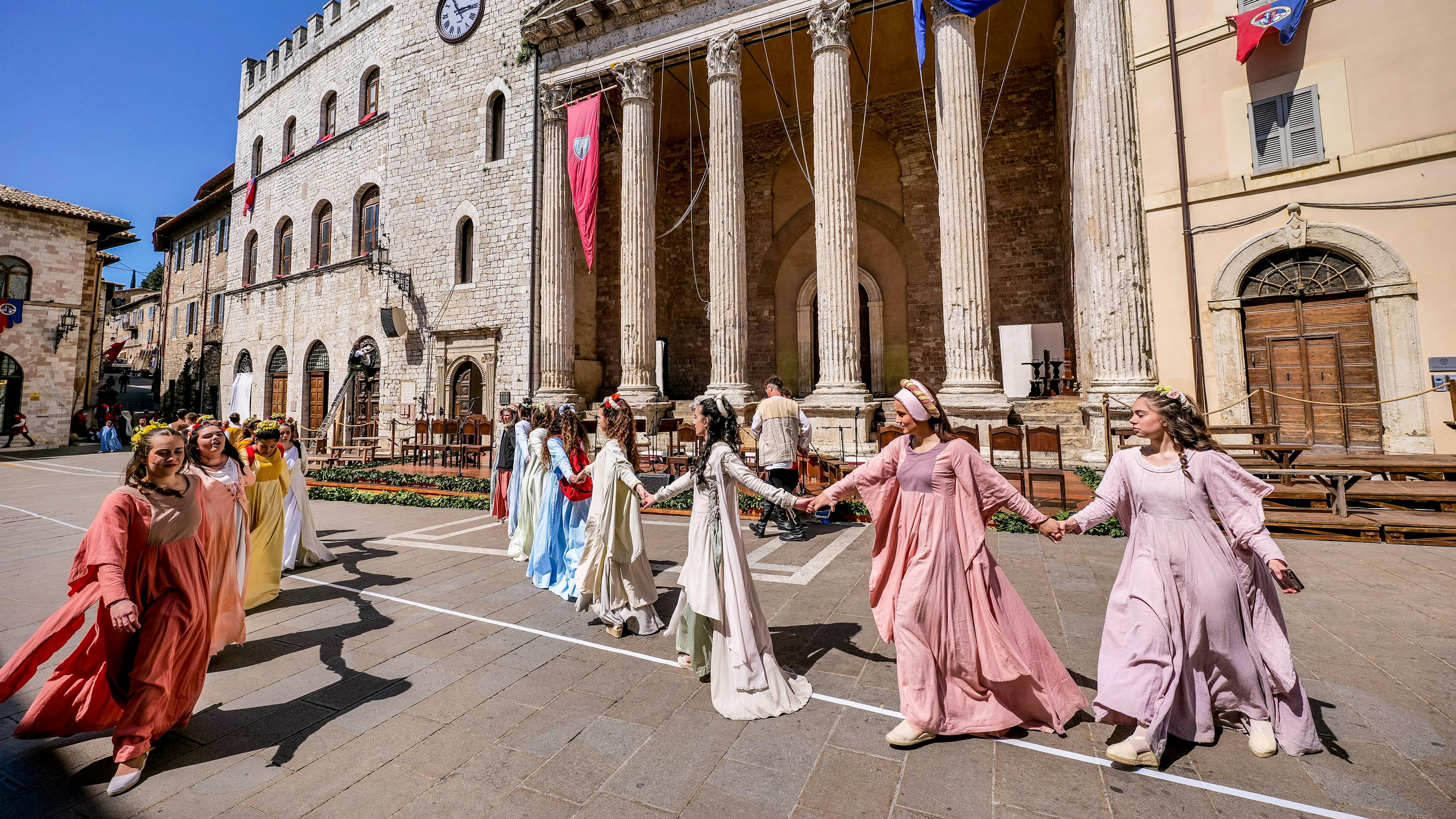

Spring is the season that marks the awakening of nature: days grow longer, trees adorn themselves with leaves, and plants offer us their fruits. It's the beginning of a new cycle, of rebirth, where life triumphs over death. Since ancient times, this time of year has been celebrated with festivals and propitiatory rituals with a magical flavor.
The "ancestors" of Calendimaggio
In ancient Rome, from April 28th to May 3rd, the Floralia took place in honor of Flora, the goddess responsible for the blooming of nature; while on May 1st, the Celts, during the feast dedicated to the god of fire Belenus, lit the Beltane fires (literally "shining"), large bonfires through which they passed the livestock as a sign of good omen.
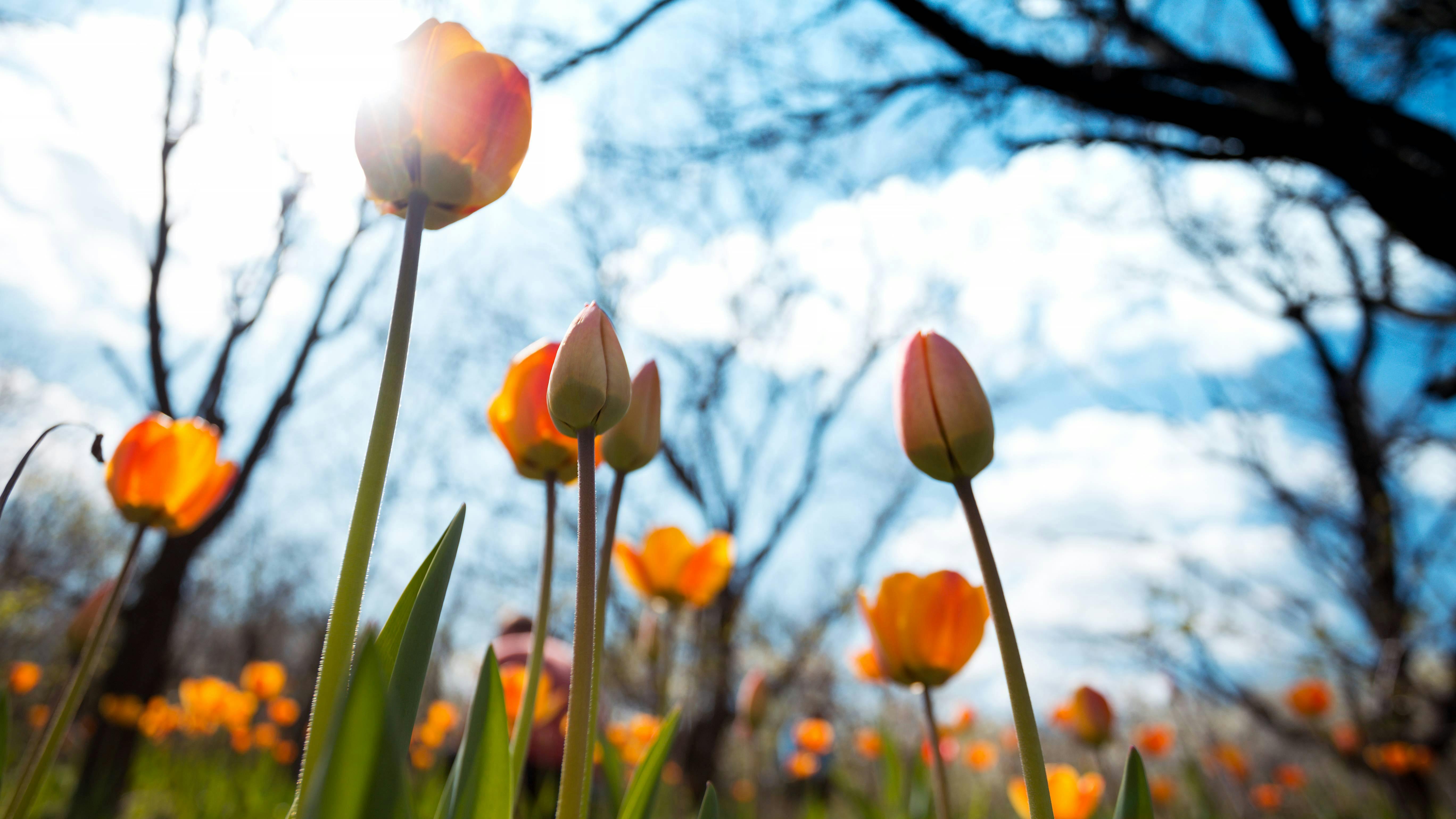
Rites across Europe to celebrate Spring
Over the centuries, throughout Europe, the first days of May were dedicated to pagan festivals aimed at celebrating the explosion of spring and the victory of light over darkness: work activities were suspended, and parades, processions, and banquets were held.
One of the rituals involved cutting down a tree, which was then stripped of all its branches except for the tuft at the top; the tree was then planted in the town square, and people gathered around it to dance and sing. Balconies and windows were decorated, boys gave flowering branches to girls as a sign of love, and in the streets, “maggianti” wandered, singing auspicious songs for the population in exchange for food.
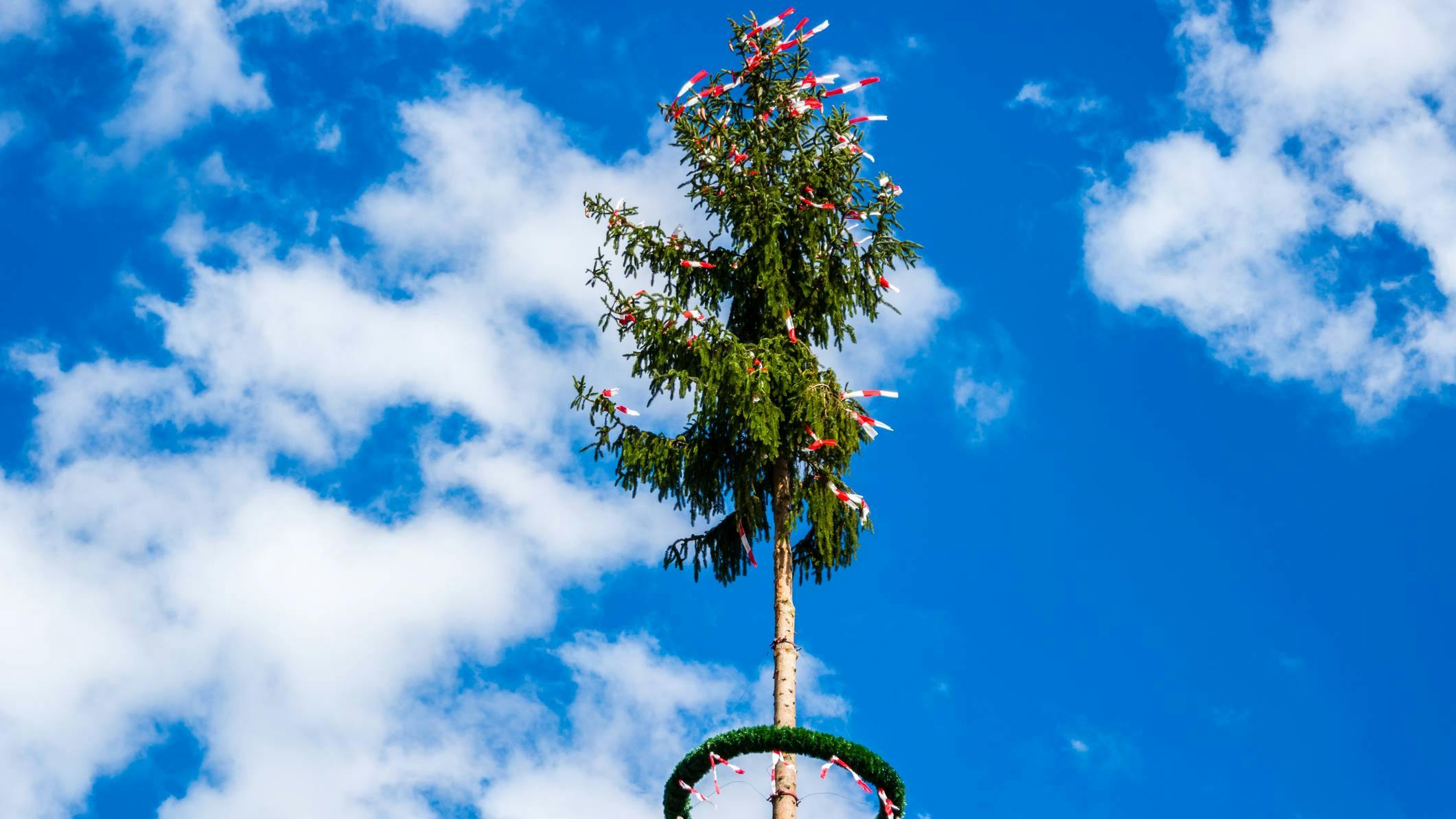
The Calendimaggio festival in our days
Today, in our country, this festival is known as Calendimaggio. Although this celebration was largely replaced by Labor Day starting in 1889, the tradition survives in various European and Italian cities. In several areas of Germany and Austria, for example, the traditional Maibaum, or “Maypole”, is erected; in Firenzuola (in Tuscany), Cantarmaggio is held, while in Assisi, the celebrations see the city divided into two factions that compete in races and tournaments.
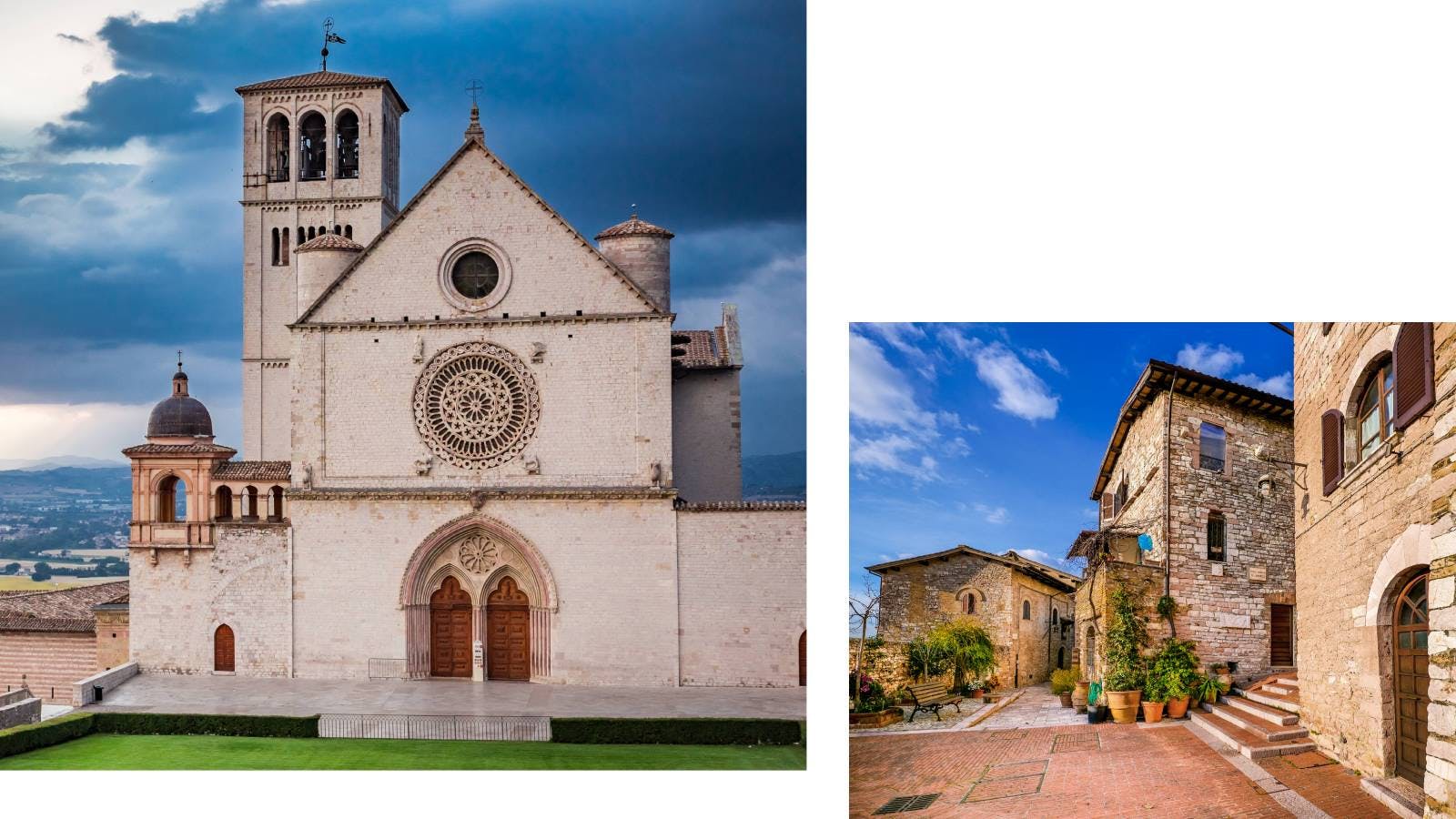
Assisi in the 1300s, between Parte de Sotto and Parte de Sopra
In the early 1300s, Assisi reached its peak, as evidenced by the presence of the greatest painters of the time such as Giotto and Cimabue, and it was also during this period that the city was divided between the Parte de Sotto and Parte de Sopra, led respectively by the families of Fiumi and Nepis. The clashes between the two factions, each with its own political agenda, could be very violent, but despite this, the Spring Festival was never stopped.
The challenge between the two Parties continues today
Since 1954, the festival for Calendimaggio has taken on the form it has today: the two parts of the city continue to compete... not with blades as in the past, but with processions in costume, musical performances, and medieval scenes. Judging the two factions are a historian, a musicologist, and a personality from the world of entertainment, who must determine which faction celebrated Spring better.
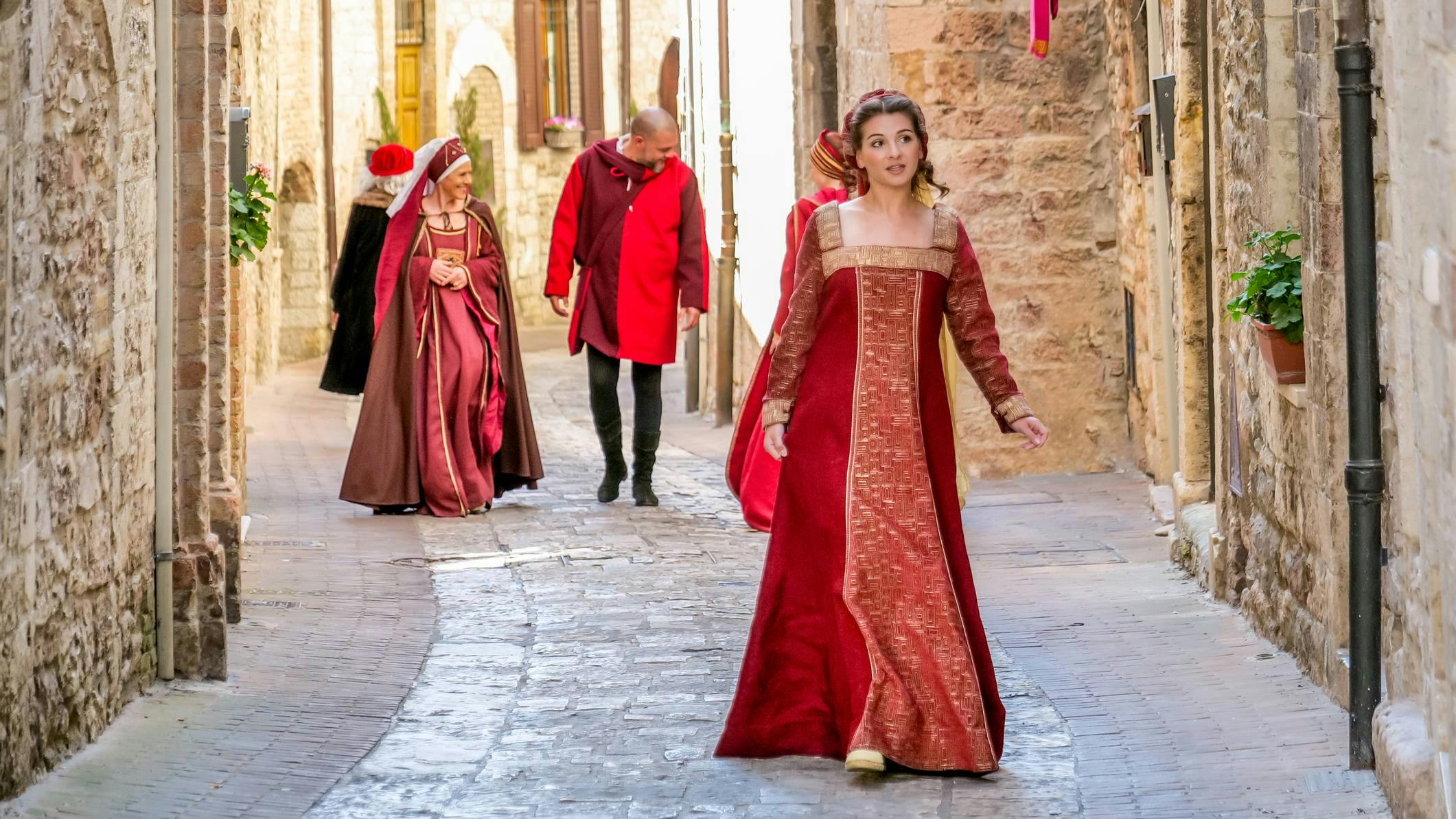
Blue or red handkerchief to decree the winner
The first week of May, therefore, the streets of Assisi come alive with medieval games, representations in dialect of the time, and see the performance of the Choirs and the election of the Madonna Primavera. The celebrations end with the proclamation of the winning Part, when the Maestro de Campo waves the handkerchief of the color of the winning faction in the air, blue for the Parte de Sopra or red for the Parte de Sotto.
The recipe for fettuccine with Umbrian ragù
If you don't have the opportunity to go to Assisi to attend the Calendimaggio celebrations, but still want to enjoy the typical flavors of festive days in Umbria at home, we share with you the recipe for Umbrian fettuccine with ragù from our Cesarina Eleonora: a true delight of taste!"
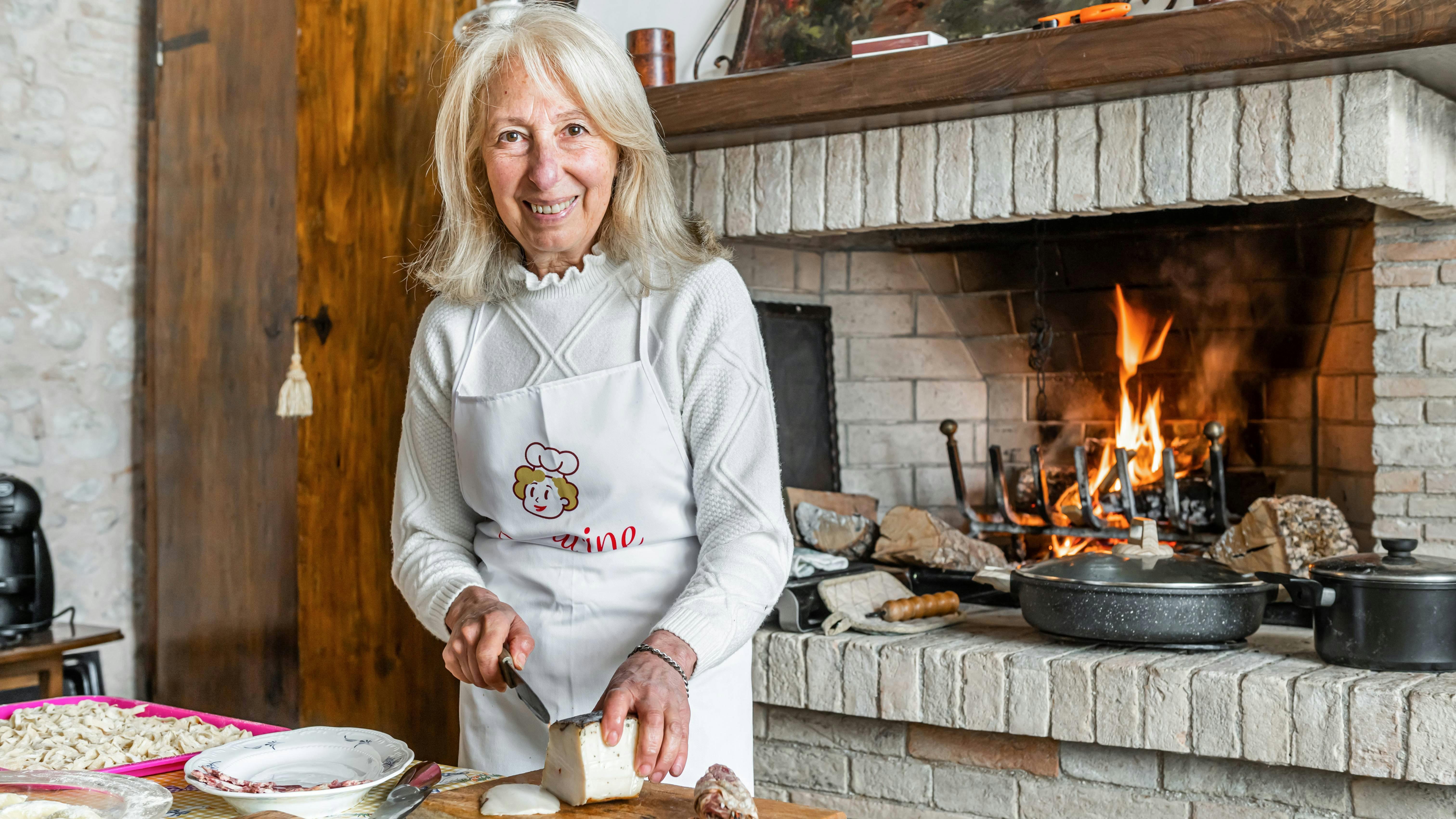
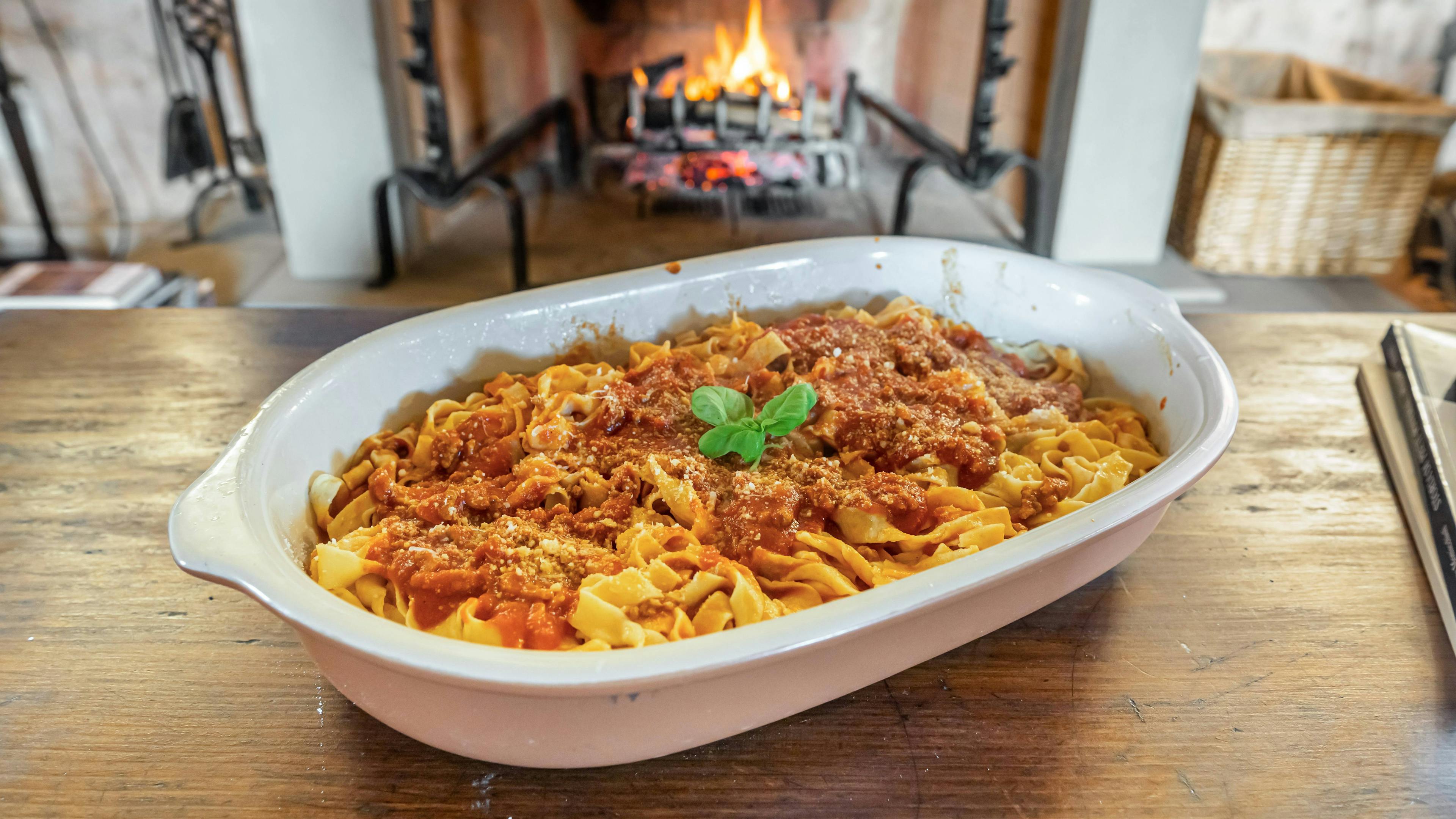
Fettuccine with Umbrian ragù
A rich and robustly flavored ragù that will please even the most discerning palates
Ingredients
- For the Umbrian ragout:
- 500 g of mixed minced meat (pork and beef)
- 400 g of tomato puree
- 1 onion
- 2 cloves of garlic
- Extra virgin olive oil
- White wine vinegar
- Salt
- For the fettuccine:
- 400 g of hard wheat semolina flour
- 4 eggs
Method
For Umbrian ragout:
- Finely chop the onion and cut two cloves of garlic in half;
- Heat a drizzle of extra virgin olive oil in a pot and then add the onion and garlic, sautéing them gently;
- Add the ground meat and brown it;
- When the meat is well cooked, deglaze with a little white wine vinegar and let it evaporate completely;
- Pour in the tomato puree and a pinch of salt;
- Cook over low heat for about an hour with the lid closed, stirring occasionally.
For fettuccine:
- On a pastry board, pour the flour and form a fountain making a hole in the center;
- Add the eggs and start beating them quickly with a fork, gradually incorporating them with the flour;
- Knead the dough with your hands until you get a smooth ball;
- Let the dough rest covered for about 30 minutes;
- Next, roll out the dough with a rolling pin until you have a thin, almost transparent sheet;
- Gently roll the pastry sheet from both sides toward the center and cut the fettuccine into strips of the width you desire.
Cesarine experiences in Umbria
If you are coming to visit Umbria, treat yourself to an unforgettable experience with one of our Cesarine! Between cooking classes and market tours, here are the experiences we have prepared for you!